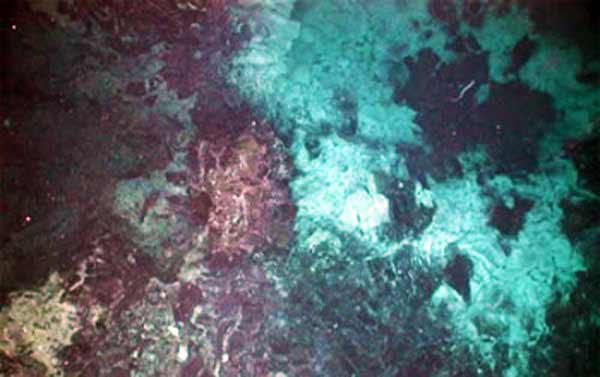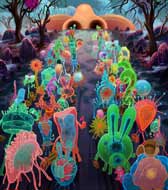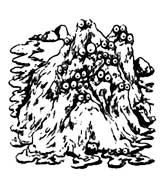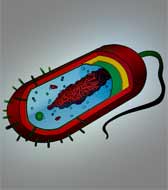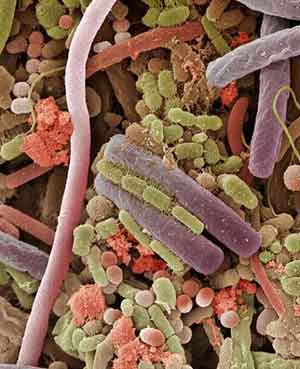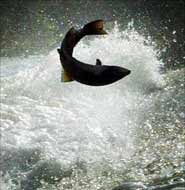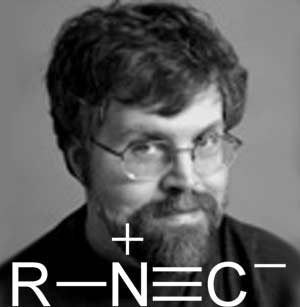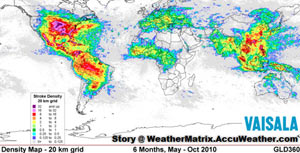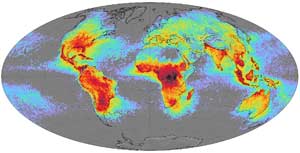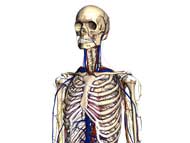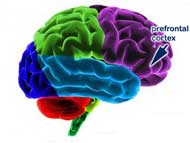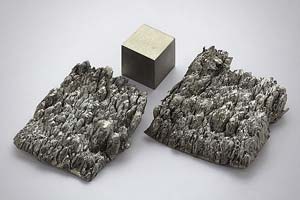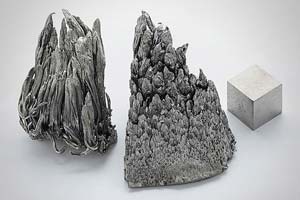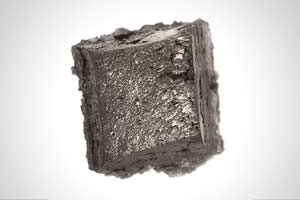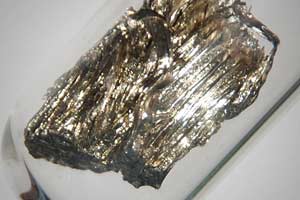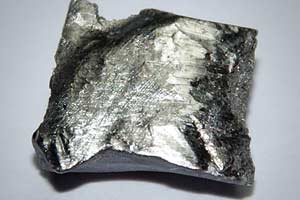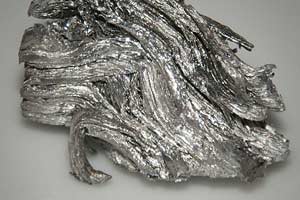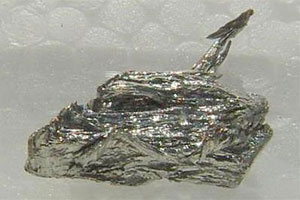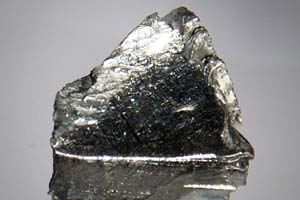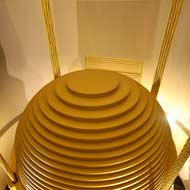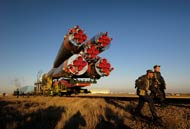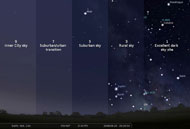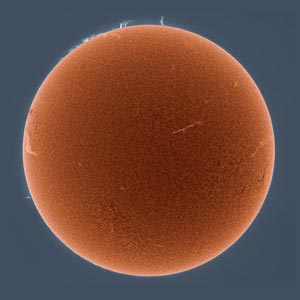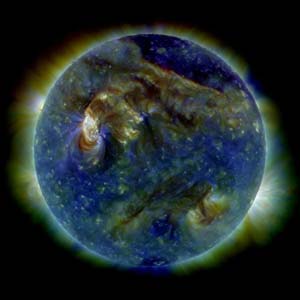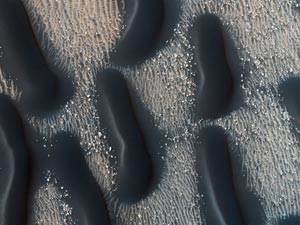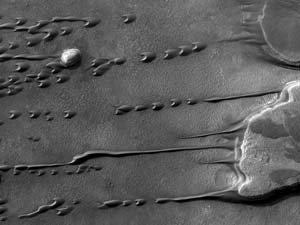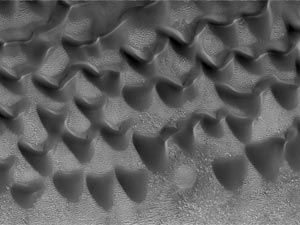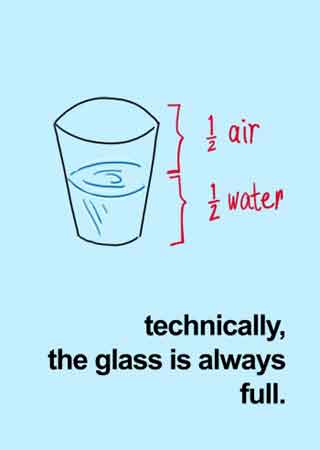Deep on the ocean floor, colonies of bacteria appear to have connected themselves via microscopic power grids that would be the envy of any small town. Much remains unknown about the process but, if confirmed, the findings could revolutionize scientists’ understanding of how the world’s smallest ecosystems operate. Almost as soon as researchers began removing oxygen, the subsurface bacteria stopped consuming hydrogen sulfide in the mud. This metabolic shutdown was a sign that the buried bacteria almost instantly realised something in the environment far above them had changed. Researchers also detected very rapid pH changes in the water. These responses occurred too quickly for any sort of chemical exchange or molecular process such as osmosis. The most plausible option is that the bacteria are somehow communicating electrically by transmitting electrons back and forth. How exactly they do this is unclear. They may all be connected to each other via a microscopic electric grid, possibly made from tiny grains of metal, such as iron and manganese, in the sediment. If the wiring idea turns out to be true, it essentially turns the bacterial community into a cross-sediment power grid — one that would span some 20 kilometres if scaled up for humans. The buried bacteria could be receiving energy in the form of electrons from the grid. Subsurface bacteria could then survive while buried and also send nutrients back up to their comrades, waiting on the surface, via chemical migration.
Anyone who attempts to generate random numbers by deterministic means is, of course, living in a state of sin.
—Science: Continual Flight from Wonder
Dec. 31, 2010
| Definition of Science – knowledge covering general truths of the operation of general laws, especially as obtained and tested through the scientific method and as concerned with the physical world. The purpose of science is to produce useful models of reality. Applied science is the application of research to human needs. Definition of ElectRon – What the US did in 1980 and 1984. |
||
| Strictly by the numbers, the vast majority — up tp 90% — of the cells in what you think of as your body are actually bacteria, not human. The number of bacterial species in the human gut is estimated to be about 40,000. The total number of bacterial cells in the gut is on the order of 100 trillion. The number of unique bacterial genes in a human gut is about 9 million. In fact, most life on the planet is likely bacteria. They have been found living in Cretaceous-era sediments below the bottom of the ocean and in ice-covered Antarctic lakes, inside volcanoes, miles high in the atmosphere, teeming in the oceans — and within every other life-form on Earth. People are partly made of pond scum. Bacteria communicate in sophisticated ways, take concerted action, influence human physiology, alter human thinking and work together to bioengineer the environment. New medical procedures encourage bacterial participation in human health. In principle, every bacterium can exchange genes with every other on the planet. A side effect: The notion of separate bacterial species is shaky, although the term is still in use for lack of a better alternative. Bacteria don’t just get together for “file sharing.” Even before quorum sensing was discovered, scientists noted many examples of coordinated action, such as “swarming,” in which a colony of bacteria moves as a unit across a surface, and the development of “fruiting bodies,” in which bacteria glom together to form inert spores as a means of surviving severe environmental conditions. Since the dominant paradigm assumes bacteria are dumb, discrete individuals, these phenomena tended to be glossed over until recently. Group behaviour has now been demonstrated so widely that many microbiologists view bacteria as multicellular organisms, much of whose activity — from gene swapping to swarming to biofilm construction — is mediated by a wide variety of chemical communications. |
||
| P aeruginosa and C difficile are common residents of human bodies and under normal circumstances are benign. So what turns them into enemies? Most of the time bacteria “have to have a reason to hurt you.” Surgery is just such a reason. A surgical patient’s normal metabolism is altered; usually nutrients are provided intravenously instead of through the digestive system, so in a patient being fed by an intravenous drip, the gut bacteria perceive their sustenance disappearing. A decline in available nutrients alarms them. And surgery triggers the release of stress compounds that they also sense. Chemotherapy and radiation have similar effects. When threatened, bacteria become defensive, often producing toxins that make the host even sicker. They tend to speed up their acquisition of and purging of genes when under external selection pressure, of which antibiotics are an obvious and powerful example. Some researchers are exploring the idea of stool transplants — that is, introducing a healthy person’s gut bacteria into a sick person’s intestines via the donor’s fæces. Although there are not many peer-reviewed studies of this rather disturbing concept, in a large majority of the cases, fæcal transplants result in almost immediate and long-lasting relief for people suffering from inflammatory bowel conditions or chronic antibiotic-induced diarrhoea. (There’s definitely a market for fæcal transplants. When one scientist mentioned the success of the procedure, he was inundated with calls from desperate patients begging for the treatment.) Maybe bacteria are just computers, which so far, despite humans’ fantasies of conscious machines, aren’t yet really thinking. But if not, they come extremely close. Bacteria are consummate practitioners of information management. They have ways of acquiring it and can do appropriate things on the basis of that information. So they must have some way to compute the proper outcome. It is these sophisticated information processing capacities that represent another step away from the anthropocentric view of the universe. Our status as the only sentient beings is dissolving as we learn more about how smart even the smallest living cells can be. Do bacteria — integrated deeply and broadly into the entire planet, shaping its geochemistry, creating substrates and chemical processes that support the development of complex organic molecules, regulating the cycling of energy and nutrients both in “higher” organisms and their environments — constitute a kind of distributed awareness encompassing the whole planet? |
||
| What’s special about the new type of antibiotic resistance labelled NDM1? NDM1 is an enzyme that confers resistance to one of the most potent classes of antibiotics, known as carbapenems. What has been observed is different in many ways to what has been seen in the past. This new resistance pattern has been reported in many different types of bacteria compared to previously and at least one in 10 of these strains appears to be pan-resistant. This means that there is no known antibiotic that can treat it. A second concern is that there is no significant new drug in development for antimicrobials. Third, this particular resistance pattern is governed by a set of genes that can move easily from one bacterium to another. Fourth, NDM1 has been found in the most commonly-encountered bacterium in the human population, E coli, often the cause of bladder and kidney infections. A further concern is that of the two drugs potentially capable of treating an infection due to one of these new multiresistant strains, one of them, colistin, causes toxic effects to the kidney in about 1/3 of people. Is this the doomsday scenario of a world without antibiotics? Unfortunately, YES. With these new multiresistant strains and their potential for worldwide spread, doctors will face terrible dilemmas when pregnant women develop kidney infections that spill over into the bloodstream and they have a pan-resistant strain containing NDM1. There are no treatment options. We are essentially back to an era with no antibiotics. Via Infectious Greed. |
||
From the book Microcosmos by Brandon Broll, scanning electron microscope (SEM) images of insects, human body parts and household items.
- Bacteria on the surface of a human tongue. Bad breath comes from tongue bacteria simply because the tongue happens to be a great place for anaerobes to live (big, warm, moist, food-rich). They flourish in all the tiny grooves between papillae and taste buds on the surface of the tongue, covered by a blanket of mucus and other non-cellular material. There, they can safely carry on the business of breaking down proteins that they find floating around in the mouth, and producing volatile sulfur compounds. It would be ideal if you could clean your tongue in the morning, at night and preferably after meals every day.
- The end of the tongue (proboscis) of a hummingbird hawkmoth. The hummingbird hawkmoth hovers in midair while feeding on nectar from flowers and are sometimes mistaken for hummingbirds. This hovering capability has evolved only in hummingbirds, certain bats, and these sphingids. Sphingids have been studied for their flying ability, especially their ability to move rapidly from side to side while hovering, called “swing-hovering.” It is thought that this evolved to deal with ambush predators that lie in wait in flowers.
- Fimbriae of a Fallopian tube. The fimbria (plural, fimbriæ) is a fringe of tissue around the ostium of the Fallopian tube, in the direction of the ovary. An ovary is not directly connected to its adjacent Fallopian tube. When ovulation is about to occur, the sex hormones activate the fimbriæ, causing them to swell with blood and hit the ovary in a gentle, sweeping motion. An oocyte is released from the ovary into the peritoneal cavity and the cilia of the fimbriae sweep the ovum into the Fallopian tube. Not all fimbriæ, but only the ovarian fimbria (fimbria ovarica) is long enough to reach all the way to ovary.
| Fox Atlanta set up secret cameras inside 5 different hotel chains from the Holiday Inn to the Ritz Carlton and caught every single one of them failing to properly wash the room’s glasses. At every single hotel, regardless of price, the glasses were simply rinsed out and left for the next guest. Some hotels used dirty bath towels to wipe the glasses. One hotel employee rinsed the glasses after cleaning the toilet — using the same gloves. Another one sprayed the glasses with blue cleaning fluid that was marked “Do not drink.” Of course, dirty glasses are the only things they would dare to cut corners on. Via Tywkiwdbi. |
||
| Albino redwood trees lack chlorophyll. Their needles are limp and waxy. They’re the exact colour of a glow-in-the-dark star you might find in a kid’s bedroom. And while no one really knows for sure, albino redwood trees may be extremely rare (one estimate is 25 in all the world). Henry Cowell Redwood State Park is in Santa Cruz, about an hour south of San Francisco, has 8 of those. Albinism is a genetic mutation that prevents cells from producing pigment. In humans and some animals, albinism is not necessarily such a big deal. But albino plants are unable to do the very thing that makes a plant a plant. Without chlorophyll, they can’t photosynthesize, meaning they can’t convert sunlight into energy. The only reason that albino redwoods survive at all is that they are connected at the root to a parent tree from which they will suck energy for their entire lives. They appear to be useless. Redwoods are hexaploid, meaning they have 6 sets of chromosomes as opposed to 2 for humans. Genetically speaking, coastal redwoods are playing with a much bigger deck of cards. There are more genetic combinations possible. They are thought to be the most adaptable tree on earth by being able to change their genes so readily. They can develop better resistance and more efficient growth patterns. Every time a sprout comes up with slightly different genes, it’s an experiment. Via Kottke by way of Tywkiwdbi. |
||
| Orbital View: Phytoplankton off New Zealand. The ocean around the Chatham Islands, off the coast of New Zealand, is particularly fertile — and a carbon sink. Two currents meet around the islands, supplying each with the nutrients and iron fertilisers the other lacks. The mingling currents foster huge blooms of phytoplankton (the green swirls in the image), which in turn support huge numbers of fish. The phytoplankton blooms, which are essentially underwater plants, are strongest in the spring. |
||
Bees and Bugs
- In a NZ Herald article, I read where “the cause of the mysterious decline of the honey bee in the US (and elsewhere) may have been found in the form of a "double whammy" infection with both a virus and a fungus. This is potentially very important as between 40% and 60% of honeybee colonies have suffered a complete collapse in the US alone. The article states: “Scientists have yet to work out how the virus and fungus can interact, as neither seems particularly lethal on their own. However, together they seem to be 100% fatal.” But I read in another source that this study didn’t disclose the relationship between the lead author, Montana bee researcher Dr Jerry Bromenshenk, and Bayer Crop Science. Bayer produces a class of neurotoxins that kills insects by attacking their nervous systems. For years, Bayer Crop Science, a subsidiary of the German pharmaceutical giant Bayer AG, has tangled with regulators and fended off lawsuits from angry beekeepers who allege the pesticides disorient and ultimately kill bees. In recent years, Bromenshenk received a significant research grant from Bayer to study bee pollination. Before receiving this funding, he had signed on to serve as expert witness for beekeepers who had brought a class-action lawsuit against Bayer. He dropped out – and then received a Bayer grant. Bromenshenk’s new company is based on detecting bee ailments, not pesticides. He defends the study and emphasises that it did not examine the impact of pesticides. “It wasn’t on the table because others are funded to do that.” He notes that no Bayer funds were used on the new study and vociferously denies that receiving Bayer funding had anything to do with his decision to withdraw from the plaintiff’s side in the litigation. The reporter who authored the article says the study “doesn’t say pesticides aren’t a cause of the underlying vulnerability that the virus-fungus combo exploits…” The EPA based its approval of neonicotinoids on the fact that the amounts found in pollen and nectar are not lethal to bees — the only metric they have. But studies have shown that at low doses, the neonicotinoids have sublethal effects that impair bees’ learning and memory. France and Italy have banned them.
- Honey is very effective in killing bacteria in all its forms, especially the drug-resistant biofilms that make treating chronic rhinosinusitis difficult. Honey was significantly more effective in killing both planktonic and biofilm-grown forms of the bacteria, compared with the rate of bactericide by antibiotics commonly used. Chronic rhinosinusitis affects approximately 31 million people each year in the US alone, costing over $4 billion in direct health expenditures and lost workplace productivity. It is among the 3 most common chronic diseases in all of North America. Not enough information here. How would you go about getting honey in contact with your sinuses? Snort it? Inhale a mist of it? Is it self-administered or must a medical practitioner of some kind get involved?
- Weta is the name given to about 70 insect species endemic to New Zealand. There are many similar species around the world, though most are in the southern hemisphere. The name comes from the Māori word “wētā” and is the same in the plural (like sheep). The Māori word for the Giant Weta is “wētā punga” (lumpy or jointed weta), sometimes rendered in English as “god of ugly things”. Weta can bite with powerful mandibles. Tree weta bites are painful but not particularly common. Weta can inflict painful scratches, with the potential of infection, but their defence displays consist of looking large and spiky, and they will retreat if given a chance. The weta’s lifestyle and habitat (where it may choose to remain concealed — especially in suburban environments – until unexpectedly confronted) combined with its notoriously unfriendly appearance, make it a frequent victim of irrational human aggression.
| Salmon develop quite distinct population structures because of their ability to home to their natal rivers. If you have such a defined system, it will quite quickly develop a variety of genetic profiles that become definitive to a particular river system. These unique characteristics mean that fish adapt to the conditions found within a particular river — to river chemistry, to temperature variations, to run time to the sea and return time to spawning grounds. These local populations have a range of adaptations that can give them an advantage within a particular river. When human interference disrupts the species’ migratory behaviour and strong homing instinct, there are long-term consequences. Historically, people who like fishing like to have big fish coming up their rivers, so there has been human movement of fish from highly productive rivers in Scotland to other areas. Introduced fish have very poor survival rates at sea, are poor at returning to the river, or fail to spawn. Salmon’s scientific name is Salmo salar and they are found throughout the North Atlantic region. The abundance of Atlantic Salmon has declined markedly since the 1970s. Increased mortality at sea appears to be a major factor in this decline. Other threats include river pollution, overfishing, and dams. |
||
| Running and swimming records are broken again and again at almost every international athletics event. But, can human performance continue to improve indefinitely? Countless researchers have (reasonably) suggested that humans have a performance limit, but Usain Bolt’s 9.58-second 100-metre run shattered the previous theoretical running speed limit of 9.60 seconds suggested 40 years ago. (This proves what?) The limit of speed in sport events has been a popular topic for the public because watching athletes setting new records to win is exciting and stimulating for many sport fans. Statistical analysis suggests that improvements in running and swimming are slowing down and will eventually reach a maximum within a decade. However, the analysis does not take into account changes in the rules, measurements, and environmental conditions. (And new drugs?) If the governing federations move the starting blocks as it were, the prediction that there are no limits may come true, and athletes can continue to make a splash in the record books indefinitely. (In other words, a type of cheat is required?) The person in the photo is an apparently rather talented high-schooler. |
||
| Placebos — the inert substances taken by control groups in clinical trials — are often assumed to be harmless sugar pills or similar. New research has found that it’s impossible to know what’s in placebos because there’s little documentation of what exactly is used in clinical trials. Out of 176 research studies published in 4 of the biggest international medical journals, only 1 in 5 fully disclose the composition of the placebo treatment. All sorts of things could be being used, some of which might have physiological effect that compromises the validity of findings on the study drug. Placebo-controlled clinical trials investigate the effects of a particular drug on a disease by comparing people who receive the treatment against patients receiving a placebo, which looks, smells, and tastes the same as the study drug but has no active ingredients. This design accounts for the placebo effect — the possibility that people in a trial may experience a health benefit because they think they’re taking a drug, not because the study drug they’re taking is effective. In this study, the authors searched for randomised, placebo-controlled trials published from January 2008 to December 2009 in 4 top medical journals. In 6 studies of placebo pills, 65 studies of placebo injections, and 25 studies of other treatment methods (for example, nasal spray), only 40 (23%) of the 176 trials studied fully disclosed the composition of the placebo treatment, while 120 (68%) did not disclose any information on the placebo at all. The remainder partially disclosed what was in the placebo treatment. “It can in fact be difficult to come up with a placebo that does not have some kind of problem.” Fewer than one in 10 (9.3%) of studies that use pills disclose the placebo. (Because taste is less of a concern, the ingredients are assumed to be less controversial?) |
||
From “Things I Won’t Work With”
- “Everyone’s heard of cyanide, whether they’ve spent any time in a chemistry classroom or not. And if you form a covalent bond to the carbon of that CN group, you’ve got a nitrile, and those are familiar compounds to any organic chemist. But what if you flip the group around and bond it via the nitrogen? That gives you a weird situation, where the nitrogen has a formal positive charge and the carbon is left with a formal negative one, which looks somehow unnatural. But that’s an isonitrile (isocyanide) for you. They’re actually quite useful, although I’d guess that the majority of chemists have never encountered one. But if they have, they’ve remembered it, because isonitriles are not shy about announcing their alien character. Our noses can immediately tell the difference between garden variety nitriles and their evil twins. The former often have no smell at all, or run to a faint spicyness. The latter smell like… like… well, I’ve never actually been downwind of the Abominable Snowman’s armpit or been had my eyeglasses fogged up by a Komodo dragon with stomach trouble, but those are the examples that come to mind.”
- “Here’s a compound that makes no noise and leaves no wreckage. It merely stinks. But this it does relentlessly and unbearably. It makes innocent downwind pedestrians stagger, clutch their stomachs, and flee in terror. It reeks to a degree that makes people suspect evil supernatural forces. It is thioacetone. No one’s quite sure what the actual odorant is (perhaps gem-dimercaptan?) and no one seems to have much desire to find out, either. In a thioacetone situation, fogging the area with brown nitrogen oxide fumes will actually improve the air. (This is from Chemistry and Industry, 1967, p. 1430, if you need more details, and I hope you don’t.)” It seems that “during early experiments, a stopper jumped from a bottle of residues, and, although replaced at once, resulted in an immediate complaint of nausea and sickness from colleagues working in a building 200 yards away.”
- “Chlorine trifluoride is a stronger oxidising agent than oxygen itself, which puts it into rare territory — it can 'burn’ things that you would normally consider already burnt to hell and gone and it’ll start roaring reactions with things like bricks and asbestos tile. It’s been used in the semiconductor industry to clean oxides off surfaces. There’s a report from the early 1950s of a one-ton spill of the stuff. It burned its way through a foot of concrete floor and chewed up another metre of sand and gravel beneath, completing a day that I’m sure no one involved ever forgot. That process would necessarily have been accompanied by copious amounts of horribly toxic and corrosive by-products: it’s bad enough when your reagent ignites wet sand, but the clouds of hot hydrofluoric acid are your special door prize if you’re foolhardy enough to hang around and watch the fireworks. When propellants spontaneously ignite on coming into contact, they’re considered hypergolic. Chlorine triflouride is so rapidly hypergolic that no ignition delay has been measured. It is hypergolic with such things as cloth, wood, and test engineers, not to mention asbestos, sand, and water — with which it reacts explosively. It can be kept in some of the ordinary structural metals — steel, copper, aluminium, et cetera — because of the formation of a thin film of insoluble metal fluoride which protects, just as an invisible coat of oxide on aluminium keeps it from burning up in the atmosphere. If this coat is melted or scrubbed off and has no chance to re-form, the operator must cope with a metal-fluorine fire. For dealing with this situation, I have always recommended a good pair of running shoes.”
| Like a fence or barricade intended to stop unwanted intruders, the skin serves as a barrier protecting the body from the hundreds of allergens, irritants, pollutants and microbes people come in contact with every day. In patients with eczema, or atopic dermatitis, the most common inflammatory human skin disease, the skin barrier is leaky, allowing intruders — pollen, mould, pet dander, dust mites and others — to be sensed by the skin and subsequently wreak havoc on the immune system. Currently, there are no treatments that target skin barrier dysfunction in eczema. To treat eczema, which causes dry, red, itchy skin, physicians typically prescribe anti-inflammatory drugs, like prednisone, and a variety of topical anti-inflammatory creams and ointments. But, modest benefit, negative side effects and cost concerns associated with these therapies leave patients and doctors eagerly awaiting new alternatives. |
||
| Nalmefene is new drug being tested aimed at reducing consumption of alcohol without requiring the abstinence that Alcoholics Anonymous and other treatment programmes say is necessary. This less-strict approach may help more abusers to seek treatment for the first time. A major problem among alcohol abusers is that many are not interested in seeking treatment, perhaps because they do not want to accept the goal of complete abstinence. Programmes such as New York-based Alcoholics Anonymous, founded in 1935, require people to abstain. Choosing not to drink at all may be more effective than trying to curb consumption. In a 28-week study, Finnish men and women taking nalmefene cut the number of days on which they drank heavily by as much as 45%, to as low as 8.6 days a month. Patients getting a placebo cut heavy-drinking days by about 1/3, showing an advantage for nalmefene. |
||
| A Boston University School of Public Health (BUSPH) researcher concludes that electronic cigarettes are much safer than real cigarettes and show promise in the fight against tobacco-related diseases and death. The battery-powered e-cigarette devices provide tobacco-less doses of nicotine in a vapourised solution. “Few, if any, chemicals at levels detected in electronic cigarettes raise serious health concerns,” the author said. “Although the existing research does not warrant a conclusion that electronic cigarettes are safe in absolute terms and further clinical studies are needed to comprehensively assess the safety of electronic cigarettes, a preponderance of the available evidence shows them to be much safer than tobacco cigarettes and comparable in toxicity to conventional nicotine replacement products.” |
||
- When Americans think of “tornado alley”, they usually think of Texas, Oklahoma and Kansas, the central and southern Plains states. But statistics show that southern Mississippi and Alabama experience more tornado watches per year (over 16) than Dallas, Kansas City, and even Oklahoma City. On average, the Twin Cities (Minneapolis / St Paul) see 5 tornado watches every summer season. This year that number was closer to 10. via Tywkiwdbi.
- There were 309,959,570 lightning strikes around the world in the past 6 months. Data differ slightly from NASA due to the difference in periods and because this is from Vaisala’s ground-based sensors. NASA uses satellite, sensors. Okay — then why isn’t the number rounded up or down to show that it isn’t exact?
- According to NASA, the most lightning occurs over the Democratic Republic of the Congo in Central Africa. (This area has thunderstorms all year round as a result of moisture-laden air masses from the Atlantic Ocean encountering mountains.) Oddly, the Vaisala map hardly shows Africa as having many strikes at all.
| Introducing Google BodyBrowser, the new 3D medical browser which ushers in a new internet technology called WebGL that allows complex 3D graphics to be used on normal web pages without need of specially adapted browser plug-ins like Flash or Java. Ahead of its official unveiling, Google has released a version available on WebGL-supported browsers or beta versions of Firefox and Google Chrome, which can be downloaded from the Google Body Browser site. WebGL is expected to become standard in new versions of most internet browsers, including Firefox, to be released next year. The technology is tipped to encourage the creation of a wide variety of 3D-enhanced web applications. But according to P Z Myers at Pharyngula, the Body Browser only works with the new Google Chrome web browser, unfortunately, and it doesn’t do much other than spin. He observes that it’s a rather rigidly fixed anatomy model, and about all you can do with it is click on a bit of something or other and see a label pop up. So not there yet, but ooching closer. |
||
| In a normal 3D-Workflow, you need to serialise navigation steps to move, zoom and rotate, and then finally you can work. With the 3D Spheric Mouse you can do all of the steps at the same time — rotate and move virtual objects in 6 axes with only one hand! There are no mechanical sensors that can generate unwanted behaviours. The specially-developed polymer springbodies create a smoothly consistent workflow. Is this as useful as it sounds? I haven’t tried it (nor seen one operating), but I can imagine it fairly clearly. But no matter, because it isn’t available yet. Via Gadget News. |
| Scientists once believed that your brain stopped physically evolving in early childhood but new research has shown that it keeps changing well into middle age. Brain scans have shown that prefrontal cortex — the area just behind your forehead — continues to change shape in your 30s and 40s. This discovery is particularly significant as the prefrontal cortex is a key area of the brain and is often thought to be key to what makes us human. It is said to be involved with decision making, social interaction and many other personality traits. The most typical psychological term for functions carried out by the prefrontal cortex area is executive function. Executive function relates to the ability to differentiate among conflicting thoughts, determine good and bad, better and best, same and different, future consequences of current activities, working toward a defined goal, prediction of outcomes, expectation based on actions, and social “control” (the ability to suppress urges that, if not suppressed, could lead to socially-unacceptable outcomes). |
||
Rare earth elements are a collection of 17 members of the periodic table, as defined by the International Union of Pure and Applied Chemistry. Composed mostly of members of the Periodic table’s lanthanide series, rare earths are similar in abundance as more familiar elements such as copper, nickel or zinc, while even the least abundant naturally occurring rare earths are far more common than gold. Why do they matter? For a number of reasons. I picked out a few of those I like.
- Scandium is a hard, silvery metal, somewhat abundant (50th most common element in the earth’s crust). But it is quite dispersed except in regions of Scandinavia (from whence its name) and Madagascar (where large concentrations are also found). Added to aluminium, it creates an alloy with increased strength in heat-affected zones, such as around welds. Applications of this alloy are found in aerospace components (such as Russian MiG 21 and MiG 29 aircraft), as well as consumer products like baseball bats, lacrosse sticks and bicycle frames. Scandium is also used in some hand guns (revolvers), while some molecules containing the element are used in high-intensity discharge lamps and light bulbs.
- Yttrium is chemically similar to the lanthanides. It is only found combined with other rare earth metals and uranium ores, never as a free element in nature. Despite this, it is estimated to be the 28th most abundant element in the earth’s crust, about 400 times more abundant than silver. Its primary application is in LED televisions, where yttrium oxide is combined with europium to help produce red pixels. It can also be used for increasing strength of aluminium and magnesium alloys and has been used in superconductors that must be kept at ultra-low temperatures. Yttrium also has applications in the treatment of various cancers such as lymphoma, leukemia, ovarian, pancreatic and bone cancers.
- Magnets made with neodymium are among the strongest permanent magnets currently known, with the ability to lift around 1,000x their own weight. Stronger than their counterparts, these magnets are used in microphones, professional loudspeakers, headphones and computer hard disks where a magnetic field is required. Neodymium is also used in lasers for both commercial and military use, as well as glass colouration and florescent lighting.
- A radioactive element, promethium, is formed in nature as a result of fission or decay of heavier elements, with only trace amounts found in naturally occurring ores. It is extremely rare – less than 500 grams thought to be on the planet at any given time. It has few applications, including use in nuclear batteries and a beta radiation source for thickness gauges, but some believe it could eventually be used as a power source for space probes and satellites.
- Samarium is a shiny silver metal; estimated annual production: 700 tons; not found free in nature. Relatively abundant in rare earth ores but requires specialised processors to extract it. Samarium has applications alongside other rare earth metals in magnets, lasers and carbon-arc lighting, but also can be used as a neutron absorber in nuclear reactors and one of its radioactive isotopes is used to treat severe pain associated with bone cancers.
- The most abundant commercially viable source of terbium is in the ion-absorption clays of Southern China, found alongside yttrium. Terbium is used in solid-state devices such as the crystal stabiliser of fuel cells, naval sonar systems and certain alloys. The largest commercial application of terbium is in colour television tubes. When the green terbium phosphor is used with blue and red Europium phosphors, it creates the colour technology in trichromatic lighting.
- Holmium is credited as having the highest magnetic strength of any element on the periodic table. Its major mining areas are in China, the US, Brazil, India, Sri Lanka and Australia, with an estimated 400,000 tons of the material currently in the earth’s crust. For its magnetic strength, holmium is used as a component in powerful magnets, as well as nuclear control rods, since it has the ability to absorb neutrons expelled by nuclear fission. Holmium is also used in microwave equipment and in medical devices such as lasers which, when made with holmium, are safe to use on human eyes.
- Thulium is the least abundant element in the lanthanide series; it is never found in pure form in nature and is generally purified through an ion-exchange process. The world’s principle source for thulium is Southern China, although the element is considered to be economically unimportant from its high cost and few applications. Thulium has been used in surgical lasers, portable x-ray devices and high temperature superconductors. (What kind of “portable x-ray devices”? Drive-around backscatter trucks?)
- Found in the earth’s crust in the small abundance of 0.5 parts per million, lutetium is difficult to separate from the other rare earth metals it is found alongside in nature. The global production of lutetium is approximately 10 tons annually, and it is mined primarily in China, the US, Brazil, India, Sri Lanka and Australia. Lutetium is worth approximately $10,000 per kilogram and for its high price it has found few commercial uses, although it has applications in the petroleum industry for petroleum cracking and has experimental uses in certain cancer treatments.
A simple reactor that mimics plants by turning sunlight into fuel has been demonstrated in the laboratory, boosting hopes for a large-scale renewable source of liquid fuel. A rooftop reactor could produce about 3 gallons of fuel a day. A key component is the rare earth metal cerium, which is almost as abundant as copper, unlike rare and expensive metals frequently used as catalysts such as platinum. Therefore, cerium availability (and thus cost) won’t limit the use of this device. Possibly this can make a contribution to global gasoline supplies. But, in that case, you’ll need to remember: water should never be used to stop fires involving cerium, as cerium reacts with water to produce hydrogen gas.
| A tuned mass damper, also known as an active mass damper or harmonic absorber, is a device mounted in structures to reduce the amplitude of mechanical vibrations. Their application can prevent discomfort, damage, or outright structural failure. They are frequently used in power transmission, automobiles, and buildings. Typically, the dampers are huge concrete blocks or steel bodies mounted in skyscrapers or other structures, and move in opposition to the resonance frequency oscillations of the structure by means of springs, fluid or pendulums. Sources of vibration and resonance include environmental forces acting on a structure (wind or earthquake) or a seemingly innocuous vibration source that causes potentially-destructive (or even just inconvenient) resonance. The seismic waves caused by an earthquake will make buildings sway and oscillate in various ways depending on the frequency and direction of ground motion, and the height and construction of the building. Seismic activity can cause excessive oscillations of the building, which may lead to structural failure. To enhance the building’s seismic performance, a proper building design engages various seismic vibration control technologies. Masses of people walking up and down stairs at once, or great numbers of people stomping in unison, can cause serious problems in large structures like stadiums if those structures lack damping measures. Vibration caused by heavy industrial machinery, generators and diesel engines can also pose problems to structural integrity, especially if mounted on a steel structure or floor. Large ocean-going vessels may employ tuned mass dampers to isolate the vessel from its engine vibration. The force of wind against tall buildings can cause the top of skyscrapers to move more than a metre. This motion can be in the form of swaying or twisting, and can cause the upper floors of such buildings to move. Certain angles of wind and aerodynamic properties of a building can accentuate the movement and cause motion sickness in people. |
| Pingvellir Fault east of Reykjavik, Iceland (64°18’ N, 21°08’ W). Iceland is situated at the emergence of the mid-Atlantic submarine dorsal and thus stands at the junction of two tectonic plates. The island is distended by the force of the volcanic action of this rift, which, through the production of magma, is driving Europe and North America apart at an average rate of nearly one inch (2 centimetres) per year. The narrow road bordering the cracks of the rock, shattered by enormous tectonic stresses, is like a house built at the water’s edge. It reflects the customary hardiness of human societies, and a surprising faith in nature. |
||
| According to the Geneva-based Aircraft Crashes Record Office, 118,934 people have died in 15,463 plane crashes between 1940 and 2008. Even when you add failed-chute sky divers, confirmed or plausible lived-to-tell-about-it incidents only total 157, with 42 occurring at heights over 10,000 feet. Statistically speaking, it’s best to be a flight crew member, a child, or travelling in a military aircraft. Over the past 4 decades, there have been at least a dozen commercial airline crashes with just one survivor. Of those documented, 4 of the survivors were crew and 7 were passengers under the age of 18. Crew survival may be related to better restraint systems, but there’s no consensus on why children seem to pull through falls more often. The Federal Aviation Agency study notes that kids, especially those under the age of 4, have more flexible skeletons, more relaxed muscle tonus, and a higher proportion of subcutaneous fat, which helps protect internal organs. Smaller people — whose heads are lower than the seat backs in front of them — are better shielded from debris in a plane that’s coming apart. Lower body weight reduces terminal velocity, plus reduced surface area decreases the chance of impalement upon landing. (Good to know.) |
||
The International Space Station (ISS) orbits Earth about 217 miles up and each revolution takes about 90 minutes.
| From 1945 to 1952, the US military detonated hundreds of nuclear bombs in the atmosphere. Photographers struggled to document the nature of the explosions and their destructive effects. George Yoshitake, 82, is one of the few cameramen still alive from that era. Images from How to Photograph an Atomic Bomb by Peter Kuran. Left: A fireball milliseconds before destruction begins. Right: An atomic flash in the South Pacific in 1951, illuminating VIP observers. |
| When they broke open molecules, they found them only stuffed with atoms. But when they broke open atoms, they found them stuffed with explosives. |
||
| Soyuz TMA-11 spacecraft is shown on its railcar on the way to its launch pad at Bikonur, Cosmodrome, Kazakhstan, 8 October 2007 by NASA Photographer Bill Ingalls. Expedition 16 was launched on 10 October, carrying Commander Peggy Whitson, Flight Engineer and Soyuz Commander Yuri Malenchenko and Malaysian Spaceflight Participant Sheikh Muszaphar Shukor to the International Space Station. Whitson and Malenchenko will spend 6 months on the station. Shukor, flying under an agreement between Malaysia and the Russian Federal Space Agency, returned to Earth on 21 October with two of the Expedition 15 crewmembers who were already on the complex. |
||
| For Many People, the Stars Don’t Come out Anymore: Light pollution can drastically change our perception of the natural environment. We spent years in rural North Carolina and had telescopes and a viewing pad. We spent more than a year at sea — where the viewing is better, but the deck is in no way stable enough for a telescope — even a gimbaled one. But at sea, stars are just one part of a total, totally different, experience. In NC, the sky was a significant part of our ongoing elucidation and entertainment. Is one environment automatically “better” than the other? |
||
Space
- This was taken by astrophotographer Alan Friedman with a relatively small (but very nice) telescope. It shows our nearest star in the light of hydrogen, specifically what astronomers call Hα (H-alpha). In this picture you can see sunspots, giant convection cells, and the gas that follows magnetic loops piercing the sun’s surface. When seen against the sun they’re called filaments, and when they’re against the background sky on the edge of the sun’s disk they’re called prominences.
- I assume this authentic. I could find no information about this specific photo so let me guess — probably from the moon? Nice framing.
- On 1 August 2010, almost the entire Earth-facing side of the sun erupted in a tumult of activity. The Solar Dynamics Observatory took this image of the news-making solar event showing the C3-class solar flare (white area on upper left), a solar tsunami (wave-like structure, upper right), multiple filaments of magnetism lifting off the stellar surface, large-scale shaking of the solar corona, radio bursts, a coronal mass ejection and more. This multi-wavelength extreme ultraviolet snapshot shows the sun’s northern hemisphere in mid-eruption. Different colours in the image represent different gas temperatures. Earth’s magnetic field was still reverberating from the solar flare impact 2 days later, which sparked aurorae as far south as Wisconsin and Iowa in the US. Large version.
| A group of scientists working with data from NASA’s Fermi Gamma-Ray Space Telescope have discovered two bubbles of energy erupting from the centre of the Milky Way galaxy. The bubbles extend 25,000 light years up and down from each side of the galaxy and contain energy equivalent to 100,000 supernova explosions. The source of the bubbles is a mystery. One possibility is that they’re fueled by a wave of star births and deaths at the galaxy centre. Another option is a gigantic belch from the black hole known to reside at the centre of the Milky Way. What it is apparently NOT is dark matter, the mysterious something that astronomers say makes up a quarter of the universe and holds galaxies together. We may not know as much about our own galaxy as we thought. Via the New Shelton wet/dry. |
||
Q: What is an astronomical unit?
A: One helluva big apartment.
| Investors know that there are myriad possibilities for how a financial market might develop. Before making an investment, they try to capture these possibilities in a single number to represent likely market performance. They can do this in one of two ways: "ensemble averaging" runs possible scenarios in parallel; "time averaging" runs scenarios in sequence. Ensemble averaging is the most commonly used approach, based on imagining multiple scenarios that all begin from the same starting conditions, and then averaging their outcomes. The alternative, time averaging, imagines all possible scenarios playing out over time. As we live on a timeline, previous decisions cannot be undone as time passes. Any new decision constrains our choices when making subsequent ones. Time averaging provides the more accurate prediction for the real world outcome of an investment decision. A new study shows that, in the investment world, the differences in the results from these two approaches are critical: time averaging inherently incorporates a measure of risk, but ensemble averaging does not. This means that ensemble averaging consistently undervalues risk by underestimating the effects of time on investments and overestimating the degree of choice that investors have. It also encourages excessive leveraging, which itself accentuates fluctuations in the market, increases market volatility, and imparts a negative drift in the market that helps drive investors into negative equity. “Too often, investors behave as if they had access to different scenarios playing out in parallel universes whose outcomes they combine and average. This misleadingly encourages them to think they have more choice and face less risk than is actually the case. In reality, we are stuck in one universe and, as a consequence, time has a bigger effect on investment risk than we’ve allowed.” |
||
| You’re in a pitch-dark room. On a table before you are 12 pennies. You know that 5 are heads up and 7 are tails up, but you don’t know which are which. By moving and flipping the coins you must produce two piles with an equal number of heads in each pile. How can you do this without seeing (or rubbing) the coins? Via Tywkiwdbi. Click on the picture at left for the answer. |
||
Dunes on Mars
- Large Sand Dunes in Proctor Crater on Mars — The dark rippled dunes likely formed more recently than the lighter rock forms they appear to cover, and are thought to slowly shift in response to pervasive winds. The dunes arise from a complex relationship between the sandy surface and high winds on Mars. Similar dunes were first seen in Proctor Crater by Mariner 9 more than 35 years ago. Most of the time when I look at this picture, the black areas look like depressions, not raised dunes.
- Flowing Sand Dunes on Mars — Although liquids freeze and evaporate quickly into the thin atmosphere of Mars, persistent winds may make large sand dunes appear to flow and even drip like a liquid. Visible on the above image right are two flat top mesas in southern Mars, where the season is changing from spring to summer. A light dome-topped hill is also visible on the far left of the image. As winds blow from right to left, flowing sand on and around the hills leaves picturesque streaks. The dark arc-shaped droplets of fine sand are called barchans, and are the interplanetary cousins of similar earth-based sand forms. Barchans can move intact downwind and can even appear to pass through each other.
- Sand Dunes on Mars Appear Exotic — The dark dunes above might be compared to shark’s teeth or chocolate confections. In reality, they arise from the complex relationship between the sandy surface and high winds on Mars. These particular dunes are located in Proctor Crater. The above picture was taken by Mars Global Surveyor (MGS), a robot spacecraft currently in orbit around Mars. MGS has recently completed a primary goal of taking and transmitting detailed survey images of the red planet over an entire Martian year (669 Earth days). MGS will now be deployed to study particularly interesting regions of Mars in more detail.
The Cosmo Theatre’s Green Room Lounge by Firelight
The website for Thaumaturgy Studios, Ltd hasn’t quite opened (we had a paying customer who had to come first), but we’re very close to having a beta version up. We hope you still plan to visit — though it will most likely be the end of January now. Thanks.
On 25 December 1990, the World Wide Web, the system providing quick access to websites over the Internet, was born in Geneva, Switzerland,
as computer scientists Tim Berners-Lee and Robert Cailliau created the world’s first hyperlinked webpage.
Person 1: Knock knock
Person 2: Who’s there?
Person 1: God.
Person 2: God who?
Person 1: This is not really god, it’s just a final working of your brain.
In a few seconds you will be dead and all will be black.
In America an elderly couple were visiting George Washington’s House and they said to the guide, “What are those triangular marks on the pavement?” He said, “They are dinosaur footprints.”
The wife said to the husband, “You wouldn`t think that they would come so near the house.”
 Animals
Animals Animation
Animation Art of Playing Cards
Art of Playing Cards Drugs
Drugs Education
Education Environment
Environment Flying
Flying History
History Humour
Humour Immigration
Immigration Info/Tech
Info/Tech Intellectual/Entertaining
Intellectual/Entertaining Lifestyles
Lifestyles Men
Men Money/Politics/Law
Money/Politics/Law New Jersey
New Jersey Odds and Oddities
Odds and Oddities Older & Under
Older & Under Photography
Photography Prisons
Prisons Relationships
Relationships Science
Science Social/Cultural
Social/Cultural Terrorism
Terrorism Wellington
Wellington Working
Working Zero Return Investment
Zero Return Investment